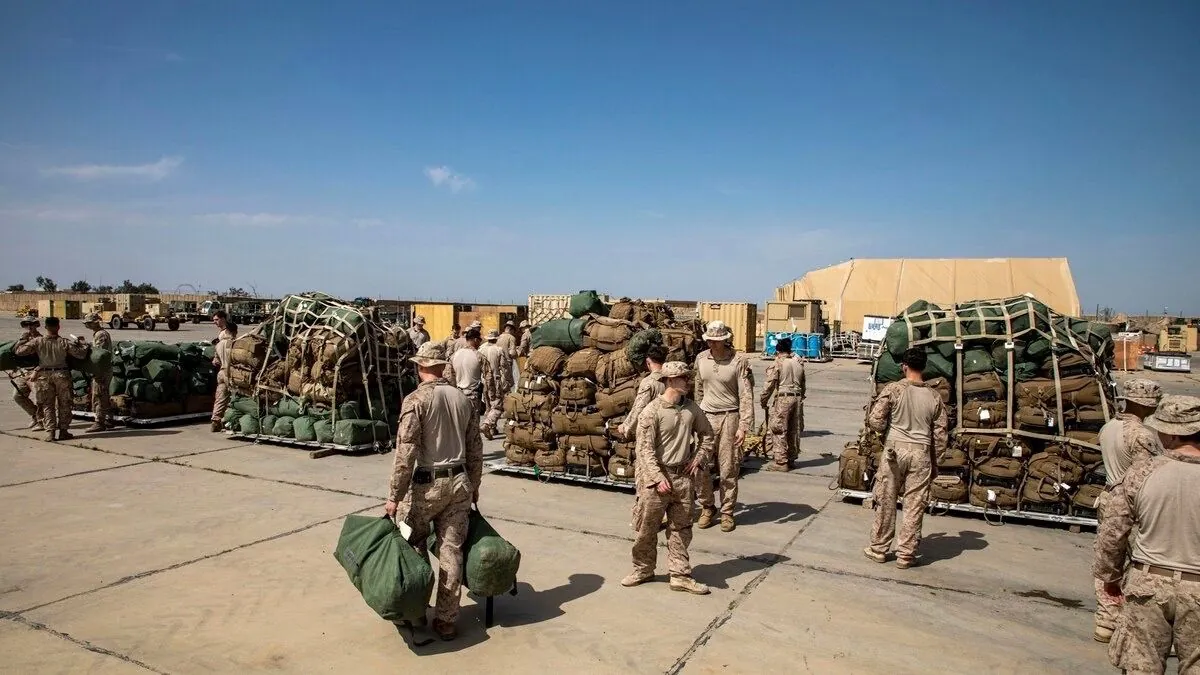US and Iraqi officials have reached an agreement to withdraw the majority of American troops from Iraq over the next two years, marking a significant shift in the countries' military cooperation. The plan, disclosed this week, outlines a transition from Operation Inherent Resolve to what Iraqi Defense Minister Thabit al-Abbasi terms a "sustainable security partnership."
The withdrawal process will occur in two phases:
- First phase: 2024-2025
- Second phase: Concluding in 2026
Currently, approximately 2,500 US troops are stationed in Iraq. A small residual force is expected to remain in the Kurdistan Region, the autonomous area in northern Iraq, after the withdrawal.
This ongoing presence in Kurdistan serves multiple purposes:
- Providing security assurance for Iraqi Kurds against Iranian-backed militia groups
- Supporting continued US operations in neighboring Syria, where about 900 American troops are positioned
The US-led coalition against the Islamic State (IS) has been active in Iraq since October 2014. At its peak, IS controlled roughly 40% of Iraqi territory, prompting a massive international response involving over 30 countries.
Key milestones in the fight against IS include:
- Battle of Mosul (October 2016 - July 2017)
- Battle of Raqqa (June - October 2017)
These operations significantly reduced IS's territorial control and operational capabilities.
"We want the relationship with the United States to return to what it was before 2014. The need for the international coalition ended with the defeat of ISIS, and now the Iraqi forces are fully capable of handling the security file efficiently."
The US military presence in Iraq has a complex history:
- 2003: US invasion of Iraq
- 2007: US troop levels peak at around 170,000
- December 18, 2011: Complete US withdrawal
- 2014: US forces return at the request of the Iraqi government
Recent security challenges have underscored the volatile nature of the region. Since October 2023, US positions in Iraq, Syria, and Jordan have faced renewed attacks from Iranian-backed militias, coinciding with the escalation of the Hamas-Israel conflict.
The agreement aims to balance Iraqi sovereignty with broader regional security concerns. For the US, maintaining a presence in Kurdistan is crucial for sustaining operations in eastern Syria, where relations with the government of Bashar al-Assad remain non-existent since the start of the Syrian Civil War in March 2011.
As negotiations continue, both nations work towards an "orderly transition" that addresses the evolving security landscape and the diminished threat from IS. The planned withdrawal reflects the "natural evolution" of the US-Iraq relationship, as described by President Joe Biden and Iraqi Prime Minister Mohammed Shia al-Sudani during recent diplomatic engagements.
This agreement marks a new chapter in US-Iraq relations, transitioning from a combat-focused mission to a more supportive security partnership. As the withdrawal progresses, the international community will closely monitor its impact on regional stability and the ongoing efforts to prevent the resurgence of extremist groups.
